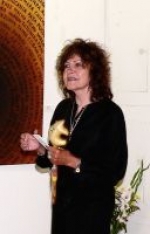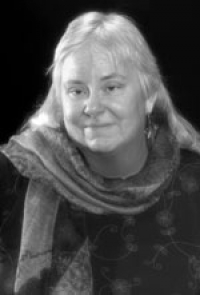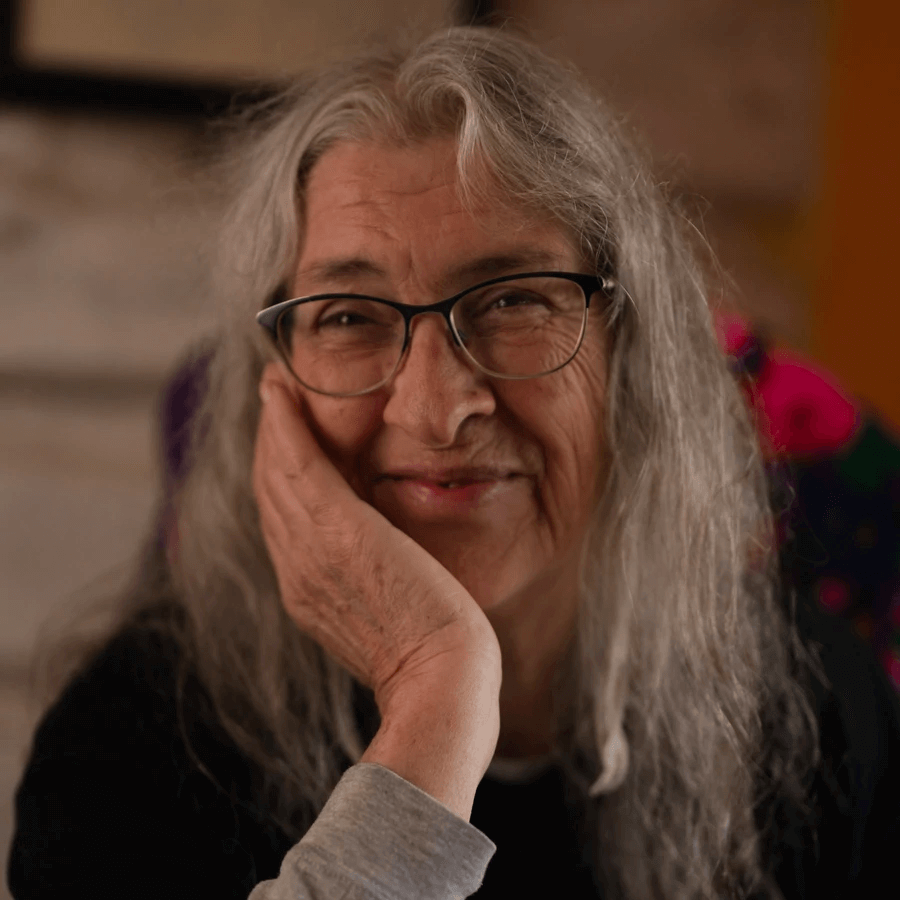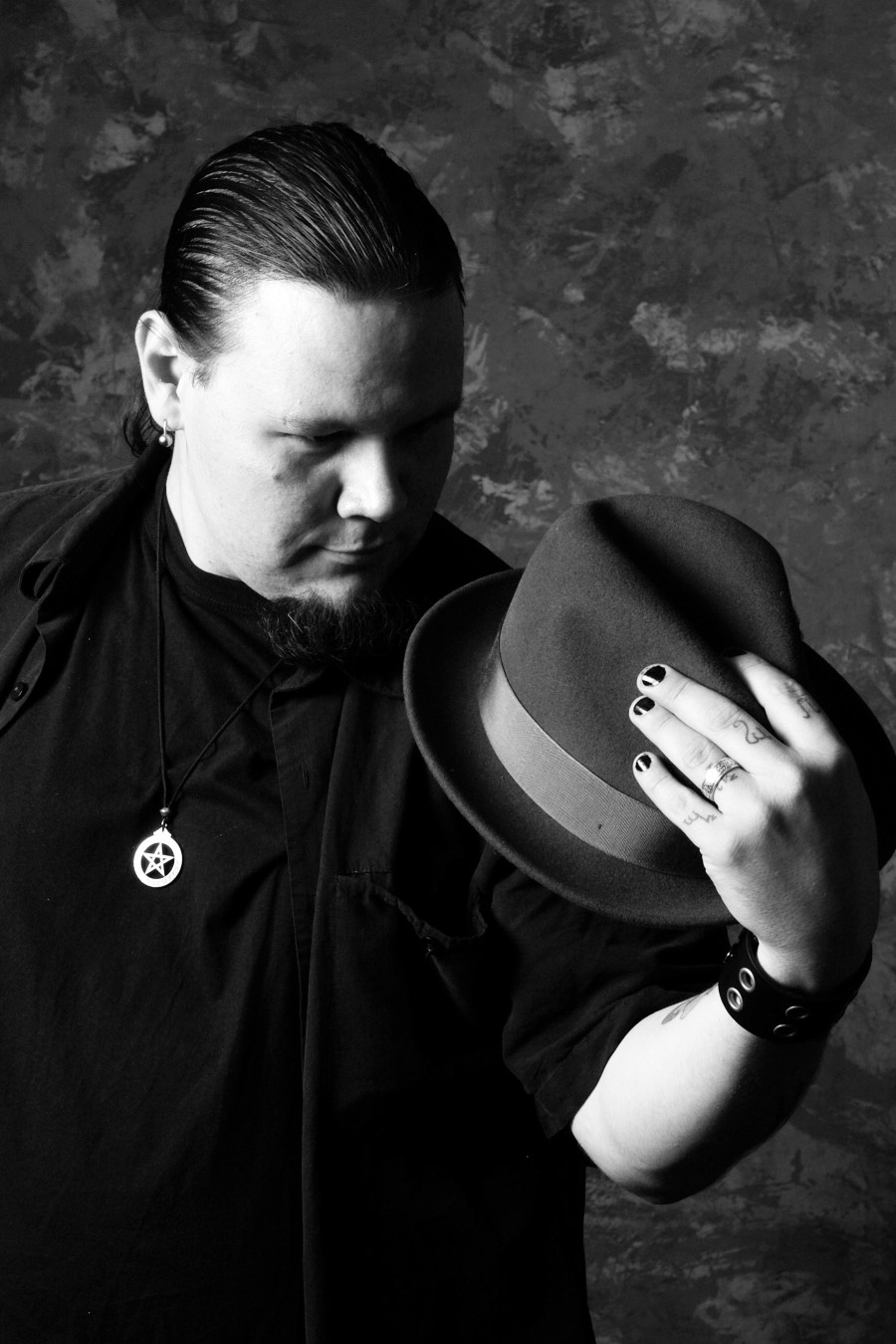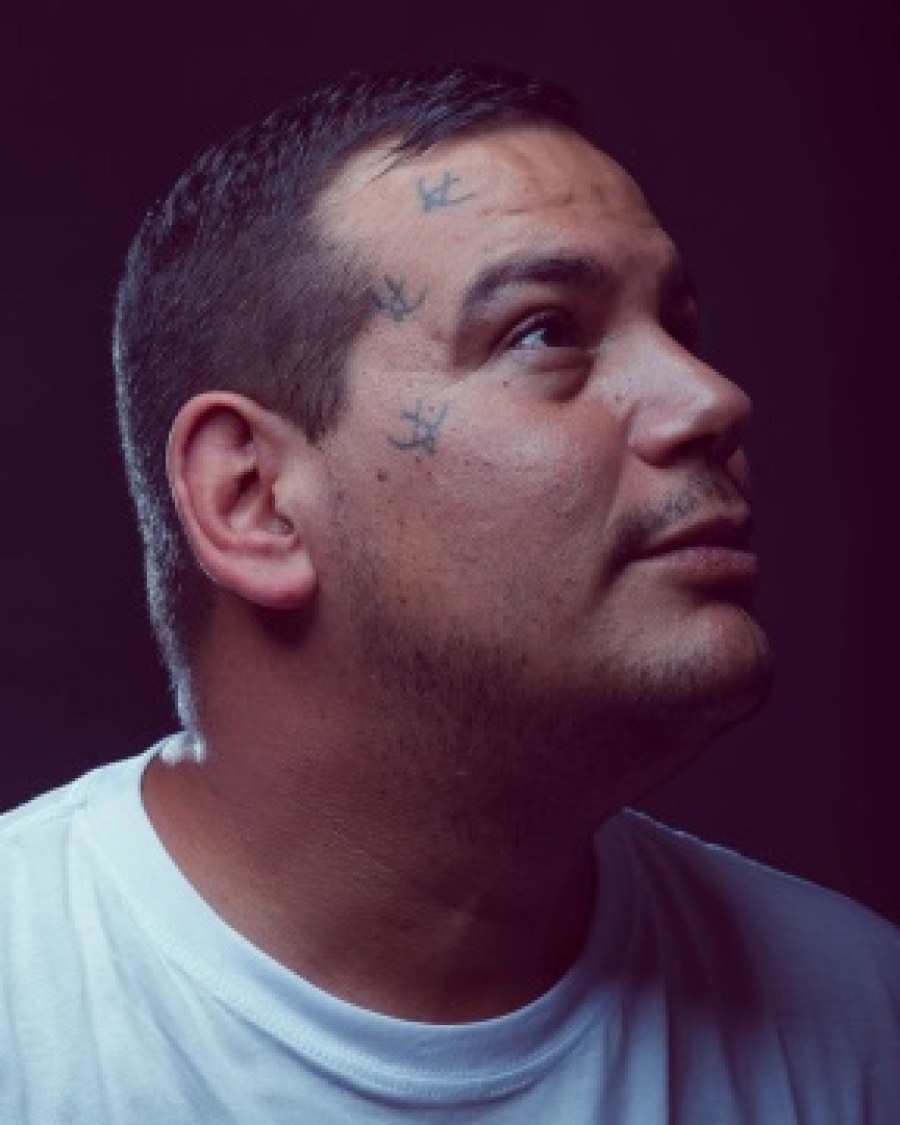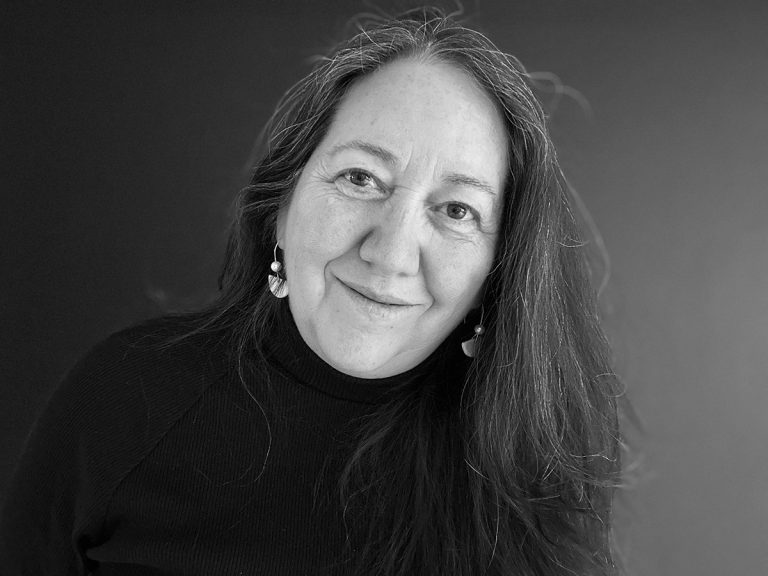Authors List
Authors List
-
Gloria Alvernaz Mulcahy is of Tsalagi Aniyunwiya ancestry and was born in the Monterrey Bay area on the Pacific coast. She became a member of the League of Canadian Poets after her first book of poetry-Songs that Untune the Sky. She has a PhD from the University of Maryland and is presently at the University of Western Ontario. Alvernaz Mulcahy's new book Borderlands & Bloodlines is focused on her indigenous roots-exploring how displacements and re-locations become journeys of necessity. The poems reflect on all our relations where cultures/races and classes touch edges occupying land, sea and sacred spaces. Alvernaz Mulcahy is co-author of several poetry books and various CDs with sound poet P. Kemp including Gathering Voice (2004) and Pinceladas in 2005. She launched Pinceladas (in English and Spanish) at Centro Cultural Canadá-Córdoba, Argentina de la Universidad Nacional de Córdoba. Her most recent publication, Viva la Vida is part of an Anthology of collaborative textual poetry and is based on two poems about Frida Kahlo-mestiza (Alvernaz Mulcahy) and Frida on Exhibit (P. Kemp) which culminated in a video poem edited by videographer D. Sneppova featuring Alvernaz Mulcahy as Frida and includes her photography from Mexico and videography. Alvernaz Mulcahy's poetry is featured in various books including Four Women and Origins (Red Kite Press) and appears in various anthologies-New voices: A celebration of new Canadian poetry (Clifton Whiten, Ed.; Mosaic Press), Anthology of magazine verse and yearbook of American poetry (A.F. Pater, Ed.; Beverly Hills: Monitor Books. She is a mixed media artist-filmmaker, photographer, musician, curator for the Centre for Creativity, King's University College and more recently has created drawings influenced by petro glyphs & pictographs combined with her poetry.
-
Celu is of mixed Cherokee and Scots-Irish ancestry Celu Amberstone was one of the only young people in her family to take an interest in learning Traditional Native crafts and medicine ways. This made several of the older members of her family very happy while annoying others. Legally blind since birth, she has defied her limitations and spent much of her life avoiding cities. Moving to Canada after falling in love with a Métis-Cree man from Manitoba, she has lived in the rain forests of the west coast, a tepee in the desert and a small village in Canada's artic. Along the way she managed to also acquire a BA in cultural anthropology and an MA in health education. For the past 10 years she has been a frequent contributor to the SF Canada professional writers website. Her novel, The Dreamer's Legacy, was published by Kegedonce Press in 2011. Celu loves telling stories and reading. She lives in Victoria British Columbia near her grown children and four grandchildren.
-
Keeshig Spade and his family are the authors and illustrators of Keeshig and the Ojibwe Pterodactyls, an illustrated children's book. Celeste Pedri-Spade describes the story: "This story came from our 4-year-old son named Keeshig Spade. Keeshig is a very proud and gifted Anishinabe storyteller. He shared this with his family back in the summer of 2016 during a trip out to visit Nanabooshoo (Sleeping Giant Provincial Park). As his parents, we encourage Keeshig to share his voice and we love to share his stories with our Elders whenever we visit them. After Keeshig came up with this story, we shared it with our Elder Gerry Baxter. He told us that it reminded him of the old stories his mother used to tell him when he was a boy and he told us to write this story down, not only for Keeshig but for other Anishinabe children. Following his direction, we wrote it down exactly as it took place that summer day (as a conversation between Keeshig and his mom.) "Art is a very important part of the way we live as an Anishinabe family. We bead, sew and also paint. Since Keeshig’s dad, Robert, is an accomplished painter and Keeshig’s younger brother Kiniw also loves to paint and draw, we thought of proposing this book as a family project. The story is Keeshig’s as told to his mother Celeste, and the illustrations can be created and contributed by Robert with help from Kiniw Spade." Keeshig Spade (Keeshigbahnahnkut) is a six year-old Anishinabe from Lac des Mille Lacs First Nation. He currently resides with his family in Sudbury, ON where he attends Alexander Public School. Keeshig enjoys being a big brother to Kiniw and Wakinyan and he enjoys doing many things with them including playing outside, swimming and dancing men’s traditional at powwows. Keehshig is a member of the Sturgeon Clan and has a gift for sharing stories and singing songs. Keeshig’s favorite time of the year is when he gets to go back west in the summer to be with his kookums and great kookum. Dr. Celeste Pedri-Spade (Anang Onimiwin) is an Anishinabekwe from Lac Des Mille Lacs First Nation. She is a mother, wife, researcher, learner, and artist. Celeste is an Assistant Professor in the School of Northern and Community Studies at Laurentian University where she also teaches in the School of Indigenous Relations. She is also the inaugural Director of the Maamwizing Indigenous Research Institute. Robert Spade (Keeshigooninii) is an Anishinabe artist-educator from Northern Ontario (Fort Hope First Nation). Rob is a father, husband, artist, sundancer, teacher (Sturgeon Clan), and has many years of experience delivering cultural and arts-based education, counseling and support, cultural sensitivity training, cultural-arts-based therapy and guidance to Indigenous and non-Indigenous children, youth, and adults. Rob has spent over half his life living and working out on the land in his traditional territory learning teachings and stories, ceremonies, traditional skills and art from his Elders. He is a gifted and accomplished storyteller, men’s traditional dancer, drummer, singer, and visual artist. Kiniw Spade (Nitaw Gamik) is a five year-old Anishinabe from Lac des Mille Lacs First Nation. He currently resides with his family in Sudbury, ON and is in SK at Alexander Public School. Kiniw enjoys spending time with his brothers, Keeshig and Wakinyan, and the rest of his family. He loves visiting, playing with small animal toys, dancing men’s traditional, reading books and painting. His favourite birds are the woodpecker and seagull.
-
Joanne Arnott is an award winning Métis/mixed blood writer from Manitoba. Born in 1960 in Winnipeg, she studied at the University of Windsor in Ontario. She has lived on the West Coast since 1982. She is currently the poetry editor for Event Magazine. In 2017, Joanne won the City of Vancouver Mayor's Arts Award. Her first book of poetry, Wiles of Girlhood won the Gerald Lampert Award in 1992. Other books include: My Grass Cradle, Breasting the Waves: On Writing & Healing, and the children's book, Ma MacDonald. She has performed readings of her work and given writing workshops across Canada and in Australia. Joanne's book Halfling Spring was shortlisted for the 2015 Pat Lowther Memorial Award (League of Canadian Poets).
-
Marjorie Beaucage is a Two-Spirit Métis Auntie, filmmaker, art-ivist and educator, a land protector and a water walker. Born in Vassar, Manitoba, to a large Métis/Michif family, Marjorie’s life’s work has been about creating social change, working to give people the tools for creating possibilities and right relations. She has been a Grandmother for Walking With Our Sisters; the Elder for OUT Saskatoon; and the Elder-In-Residence for the University of Saskatchewan Student Union. As a current Board Member of Chokecherry Studios, she is giving back to future art-ivists as they stand up for themselves and their community through creating art, music, writing. She just finished six short harm-reduction videos for creating possibilities of wellness with story medicine.
-
Louise Bernice Halfe, whose Cree name is Sky Dancer, was born in Two Hills, Alberta. She was raised on the Saddle Lake Indian Reserve and attended Blue Quills Residential School. She first published her poetry in Writing the Circle: Women of Western Canada. She has since published four poetry collections, with a fifth to be released in 2021. A retrospective of her work, Sôhkêyihta, was published by Wilfrid Laurier Press in 2018. Blue Marrow was first published in 1998 and was a finalist for the Governor General’s Award for Poetry, Pat Lowther Award, and Saskatchewan Book of the Year Award. Halfe, whose works are well known for their inclusion of Cree language and teachings, served as poet laureate of Saskatchewan, only the second person to do so. She has been awarded three Honourary Degrees of Letters, from Wilfrid Laurier University (2018), the University of Saskatchewan (2019) and Mount Royal University (2021). She works as an Elder at the University of Saskatchewan where she is a consultant in several departments. In 2020 she won the Cheryl & Henry Kloppenburg Award for Literary Excellence and was awarded a lifetime membership with the League of Canadian poets. She lives just outside of Saskatoon.
-
Chris Bose is a writer, multi-disciplinary artist, musician, and filmmaker, who has read and performed at universities, theatres, and coffeehouses at all points from Victoria to Montreal, as well as the BC Festival of the Arts, as a literary delegate to the Talking Stick Aboriginal Arts Festival in Vancouver and the Word on the Street Festival in Toronto. Chris continues to make art on a daily basis, and is also a workshop facilitator of community arts events, digital storytelling, art workshops with people of all ages and backgrounds, curatorial work for First Nations art shows and projects, research and writing for periodicals across Canada, project management and coordination, mixed-media productions, film, audio, and video recording and editing, and more. He is of the N'laka'pamux Nation in BC, and currently spends his time in Kamloops, BC. Visit Chris Bose's blog, Urban Coyote TeeVee Listen to Chris Bose's stream on soundcloud
-
Warren Cariou has written fiction and nonfiction about his home community in northwestern Saskatchewan, including Lake of the Prairies, which won the Drainie-Taylor Prize and was nominated for several other prizes. He teaches Indigenous literature at the University of Manitoba where he also directs the Centre for Creative Writing and Oral Culture.
-
Donald Chrétien created the beautiful interior illustrations for Walking in Balance, written by Basil Johnston. The unique style and impact of Indigenous fine artist Donald Chrétien springs from his combined passion for colour and woodland-style expression. His ongoing exploration of his heritage has him concentrating on distinct features of Ojibwe clans acrylic on canvas. His works are exhibited in some of the most interesting corners of North America. His Vancouver Olympics installation piece, titled: Ngashi Nijii Bineshiinh or Mother, Friend, Small Bird, is on permanent display in Vancouver's Pacific Coliseum and stands 12 feet high by 80 feet long. Over his 30-year career, Donald has demonstrated an ongoing commitment to giving back to his community. For the Union of Ontario Indians, he produced artwork for a package of educational resources dealing with Indian Residential Schools. "Little Butterfly Girl", tells the story of a child who was taken from her First Nation and brought to a Residential School. The illustrations depict the harsh reality of losing one's self and spirituality to abuse and forced religion. Donald's art can also be seen at Owen Sound's Grey Roots Museum, where it has been on exhibit since July 2010. The Good People: Know Our Stories, Know Us relates the history of the Anishinaabe and gives a greater understanding of First Nations spiritual beliefs. This collaboration led to Chrétien providing the illustrations for Basil Johnston's book, "Walking in Balance" -- ten traditional Anishinaabe stories told in both Anishinaabe and English. Donald makes his home in Newmarket, where 10 totems he created reside along Tom Taylor Trail.
-
Joseph is a Kwantlen poet, playwright and father from the Fort Langley band in British Columbia. He received a Diploma in Performing Arts from Algonquin College and studied Theatre and Direction at the University of Ottawa. His produced plays include Shake (published by skyuks press 2003.), Crackers and Soup (1994), No Totem for My Story (1995), Where Two Rivers Meet (1995), and Please Don't Touch the Indians (1998). Joseph has been a Playwright-in-Residence for the Museum of Civilization in Hull, in 1995 and for Native Earth in Toronto in 1996. Joseph was also Playwright in Residence at the National Arts Centre in Ottawa, in the fall of 2008. He is also the Heritage/Lands Officer for his people and has been performing his duties for 14 years now. He has been tasked with protecting his people’s heritage from the many destructive elements of development in the Kwantlen territory.
- Joseph loves to fish
- He loves to write plays
- He loves to write books of poetry
- He also loves to watch is daughter Danessa play soccer and hockey.
-
David Groulx was raised in Northern Ontario. He is proud of his Indigenous roots – Ojibwe Indian and French Canadian. After receiving his BA from Lakehead University, where he won the Munro Poetry Prize, David studied creative writing at the En’owkin Centre in Penticton, B.C., where he won the Simon J Lucas Jr. Memorial Award for poetry. He has also studied at The University of Victoria Creative Writing Program. David won the 3rd annual Poetry NOW Battle of the Bards in 2011, and was a featured reader at the IFOA in Toronto & Barrie (2011), as well as Ottawa Writer’s Festival (2012). He was the Writer-In-Residence for Open Book Toronto for November 2012. His poetry has been translated into French, Spanish and German and has appeared in over a 160 publications in 16 countries. He lives in Ottawa, Canada.
-
Al Hunter is an Anishinaabe writer who has published poetry in books and journals, taught extensively, and performed internationally. A member of Rainy River First Nations and former chief, Hunter has expertise in land claims negotiations, and is a longstanding activist on behalf of Indigenous rights and wellness, and environmental responsibility. Hunter lives in Manitou Rapids, Rainy River First Nations in Ontario. His poetry has been widely published and anthologized. Hunter was named an Anishinaabe Achiever of the Treaty #3 Nation for his environmental and educational work in 2000. During the summer of that same year, he and others led “A Walk to Remember.” They walked for 1200 miles circumnavigating Lake Superior “to bring forth community visions of protecting the air, land and water for the Seven Generations yet to come.” Visit Al Hunter's blog.
-
It is with great sadness and respect that Kegedonce Press says a fond "baamaapii gwabmin" to Basil H. Johnston, our dear friend, renowned author, celebrated storyteller, tireless promoter of the Anishinaabe language, and much loved member of the Kegedonce Press family as he makes his journey across the path of stars. It has been our great joy and honour to have worked with Basil over the past years to share his work with the public. Words cannot adequately express our gratitude for Basil's generosity, humour, straightforwardness, and laughter. We hold many wonderful memories of him both personally and professionally and know that our lives, and the lives of his many friends and readers, were enriched for having known him. Basil, we will miss you deeply. K’zaugin and chi megwetch for the tremendous legacy you have left us all. Until we meet again… The Kegedonce Press Family—Sept. 10, 2015 Back in 1968 a grade 5 student, after studying Indians in depth for five weeks, asked Basil Johnston, a visitor to the school, “Is that all there is to Indians, Sir?”Since that time Basil Johnston wrote over 15 books in English and 5 in Ojibway to show that there is much more to North American life than social organization, hunting and fishing, food preparation, clothing, dwellings and transportation. Basil Johnston was an esteemed Anishinaabe writer, storyteller, language teacher and scholar. He was born in Wasauksing First Nation in 1929, and was a member of the Chippewas of Nawash Unceded First Nation. Johnston was awarded the Order of Ontario, three honorary doctorates, and the 2013 OAC Aboriginal Arts Award. Among the books that Basil wrote are Ojibway Heritage, Indian School Days, The Manitous and Crazy Dave. In addition he has written numerous articles that have been published in newspapers, anthologies and periodicals. For his work, he has received the Order of Ontario and Honourary Doctorates from the University of Toronto and Laurentian University. In June 2013, Basil Johnston was awarded the Aboriginal Arts Award from the Ontario Arts Council. Read about it here.
-
Born in Moose Factory Ontario, Jules was raised by her Cree speaking grandparents in Moosonee, and also with her mother in Ottawa, a warrior of the Canadian Residential school system. Jules is a band member of Attawapiskat First Nation, the Ancestral lands of the MoshKeKo InNiNeWak. She currently resides in Vancouver where she is a PhD candidate with the Institute of Gender, Race, Sexuality, and Social Justice at the University of British Columbia, her research focus is Indigenous documentary. Jules was the “Aboriginal” [Indigenous] Storyteller in Residence with the Vancouver Public Library where she further developed her poetry. She carries extensive knowledge working in Indigenous community in several different capacities and these community experiences continue to feed her advocacy and her arts practice.
-
John McDonald is an award-winning writer, artist, historian, musician, playwright, actor and activist originally from Prince Albert, Saskatchewan. A sixth-generation direct descendant of Chief Mistawasis of the Plains Cree, John’s writings and artwork have been displayed in various publications, private and permanent collections and galleries around the world, including the Canadian War Museum in Ottawa. John is one of the founding members of the P.A. Lowbrow art movement, and is the Vice-President of the Indigenous Peoples Artists Collective. He has served as guest editorial writer for several international publications. John is also the author of The Glass Lodge, published by Kegedonce Press, which was selected as one of the books for the 2009 First Nations Libraries Community Reads program. He has also contributed work to anthologies and secondary school textbooks. John has studied, on scholarship, at England’s prestigious University of Cambridge, where in July 2000 he made international headlines by symbolically ‘discovering’ and ‘claiming’ England for the First peoples of the Americas. John is also an acclaimed public speaker, who has presented in venues across the globe, such as the Anskohk Aboriginal Literature Festival, the Black Hills Seminars on Reclaiming Youth, The Appalachian Mountain Seminars, the Edmonton and Fort McMurray Literary Festival, the Eden Mills Writers Festival and at the Ottawa International Writers Festival. John was honoured with the opportunity to speak before the Governor General of Australia in Sydney, NSW in April of 2001. John was also included in the Aboriginal Artists and Performers Inventory for the 2010 Olympic Winter Games in Vancouver, BC. John’s artwork and writing have been nominated for several awards, including the 2001 Saskatchewan Aboriginal Youth Achievement Award, and in 2010 and 2013 he was honoured with grants from the Saskatchewan Arts Board. A noted polymath, John lives in Northern Saskatchewan.
-
Neal McLeod is Cree (having grown up on the James Smith reserve in Saskatchewan) and Swedish. He had the fortunate opportunity to study abroad at the Swedish Art Academy at Umeå. Neal has exhibited his art work throughout Canada including the 2005 exhibition au fil de mes jours (in my lifetime) at Le Musée National des Beaux-arts du Quebec which was remounted at the Museum of Civilization in 2007. Neal’s first book of poetry entitled Songs to Kill a Wîhtikow, was nominated for several Saskatchewan book awards including Book of the Year in 2005. It was nominated for Book of the Year at the Anskohk Aboriginal Literature Awards, and won the Poetry Book of the Year by unanimous decision of the jurors. In 2007 Cree Narrative Memory was published, which was nominated for book of the year at the Anskohk Aboriginal Literature Awards. In the fall of 2008, he published his second book of poetry entitled Gabriel’s Beach. He also recently published Indigenous Poetics in Canada (Wilfrid Laurier University Press) for which he received the Gabrielle Roy Prize for literary theory and criticism. The following books by Neal McLeod are in Press: mitêwâcimowina: Indigenous Science Fiction and Speculative Storytelling (Theytus Books), 100 Days of Cree (University of Regina Press), and cîhcêwêsin: new poetry from indigenous saskatchewan (Hagios Press). He is also working on: the life story of Noel Starblanket (Cree leader), a book of poetry called The Book of Ayâs, a retranslation of Plains Cree Texts, and a history of the Piapot Cree First Nation. Neal currently lives in Kinistino, Saskatchewan.
-
Bomgiizhik (Isaac Murdoch) is from Nimkii Aazhibikoong First Nation. He is of the Fish Clan and is Ojibwe. He has four beautiful children. He currently lives in the forest at Nimkii Aazhibikoong, an Indigenous community that focuses on Indigenous language, art, and land based activities. Being blessed with the opportunity, Bomgiizhik grew up in the traditional setting of hunting and gathering on the land. Having spent many years learning from Elders, he spends a lot of his time as a Story Teller. Many of these stories become his visual art pieces which have become recognized world wide. Bomgiizhik is also a Singer Song Writer who loves to make music when ever he gets a chance. You will often find him on the land looking at his favorite plants or gazing into the beautiful night sky. Bomgiizhik (revolving Sky) Nimkii Aazhibikoong njibaa. Giigoonhan doodeman. Ojibwe aawi. Niiwin gwenaajiwinjin wdaansan wda’aawaan. Nongo megwaa daa mtigwaakiing. Nimkii Aazhibikoong, Nishinaabekiing enaagdoot Nishinaabemowin miinwaa mzinbiigeng, ngoj-go-gegoo baa nankiing maakiing. Aapji gii-mnaabewzi, Bomgiizhik gii-bi-kogid, ghkendangwaa zhi-nishnaabe maadzid, gi-giiwse, gii-zgaktaaso, gegookiing edinang.Aashi gaa-bi-kenoomaagzid getsinjin gii-bi-ghkendmaad niibna nso-boon, miinongo maanda enakiid, aadsookewnini aawi. Niibnaa go kinda dbaajmowininan gashtoonanwii-mzinbii’ang ezhiwaambdvng, miidash gonda mzinbiiganag kina mziwi king ewaambjigaazjig. Bomgiizhik ge’e ngomwinan ezhtoojindo-ngamnan, miinwaa doo-zhibii’aanan. Aapji go bishgendaan maandqa nankid, pii gwa zhised. Naangodnong syaakyoojin waawaaskoneyan maage datganaabit oodi gnawaambdang gwenaajwinik, gwenaajwang dibik giizhik. We are in special times. Never in the History of Humanity have we been faced with the challenges that we are now. Climate change is here and the World is changing fast. I truly believe that when we put our hearts together and unite for the Earth and people, we can achieve anything. When we lift up our people and recognize the strengths and gifts of others, we can be a force of nature. Together we will win! Aapiji gwa naa nonggwa kina gegoo chi zhiwebat. Gaayii gwa wiikaa e`bemaadizit gii bi waabdaziin nonngwaa ezhiwebiziiying. Weyiip nonggwa gegoo bi aansemigat naasaap ge ezhiiyaamigak gojiing, eshkam ge bi wiizho`oomgat. Ndoo ndwetaan wiigwa, Iishpin kina mi maamiwiizing maanda ji da akiiminaa, ka shkitamaami gwa. Pii gaazimaaying Anishinaabek miinwaa ge ezhi maandaawshkewziwaad miinwaa ezhi zoongde`eyaad, aapji gwa ka zoongaabwiimi. Ka kinaagemi dash.
-
Christi Belcourt is a Michif (Métis) visual artist with a deep respect for Mother Earth, the traditions and the knowledge of her people. In addition to her paintings, she is also known as a community-based artist, environmentalist and advocate for the lands, waters and Indigenous peoples. She is currently a lead organizer for the Onaman Collective, which focuses on the resurgence of language and land-based practices. She is also the lead coordinator for Walking With Our Sisters, a community-driven project that honours murdered or missing Indigenous women. Her work Giniigaaniimenaaning (Looking Ahead) commemorates residential school survivors, their families and communities to mark the Prime Minister’s historic apology in 2008 and is installed at the Centre Block on Parliament Hill, commissioned by the Government of Canada. She was named the Aboriginal Arts Laureate by the Ontario Arts Council in 2015. In 2016 she won a Governor General’s Innovation Award and was named the winner of the 2016 Premier’s Awards in the Arts. Author of Medicines To Help Us (Gabriel Dumont Institute, 2007) and Beadwork (Ningwakwe Learning Press, 2010). Christi’s work is found within the permanent collections of the National Gallery of Canada, the Art Gallery of Ontario, Gabriel Dumont Institute, the Indian and Inuit Art Collection, Parliament Hill, the Thunder Bay Art Gallery and the Canadian Museum of Civilization, First People’s Hall.

